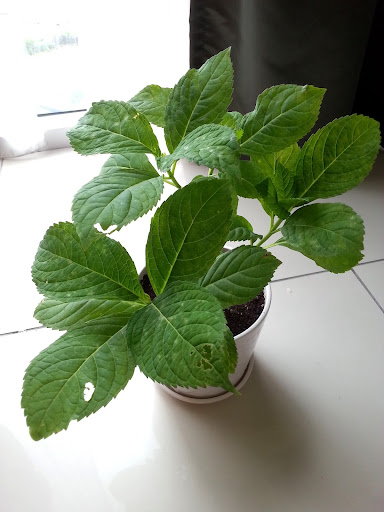imafan26 wrote:Check the plant for snails or slugs. There are some holes in the leaves that look like that kind of damage and snails like soft growth.
Mildew likes high humidity and poor air circulation. Fungal diseases are easier to prevent than cure.
Thank you for the reminder.
I've checked for crawlies when I purchased it, there are none. They have the holes upon purchase and I didn't remove the leaves seeing they are just holes.
Climate is a huge factor, I will say, I live in a tropical country (Malaysia) we have high humidity but I have my fan on all the time so air circulation is ok. Oh I don't have a yard so I'm planting this indoor. This plant has been acclimatized by the way.
I have another hydrangea that has not been acclimatized though but it's doing fine and it's placed in a different room from the sick hydrangea.

luis_pr wrote:Yes, the solution with milk might leave a whiteish coating. When I used on my Crape Myrtles, I left it "on". The more milk one uses on the solution, the more noticeable it is. I try not to exceed a 20 or 30% milk solution for that reason. And because in larger concentrations, it has attracted the interest of my pets.
The article was not too clear. Regular watering should be done by watering the soil and not the leaves. However, when you spray an antifungal solution like milk & water or baking soda & water on the shrub, you need to spray to the leaves (to-p and bottom). That is what they were referring to. By the way, I like to also spray the stems too since spores can collect there. It is recommended procedure when treating roses with blackspot so, I spray stems too when applying an anti-PM solution on other shrubs.
I followed your instructions to spray the leaves all over and the stems too, they smell so milky

I will spray the plant again in a week. how long or how many application usually does it take you to have the plant cleared of the infection?



